BUSINESS
BUSINESS
▼
- Home
- Business
- greenhouse type
business introductiongreenhouse type
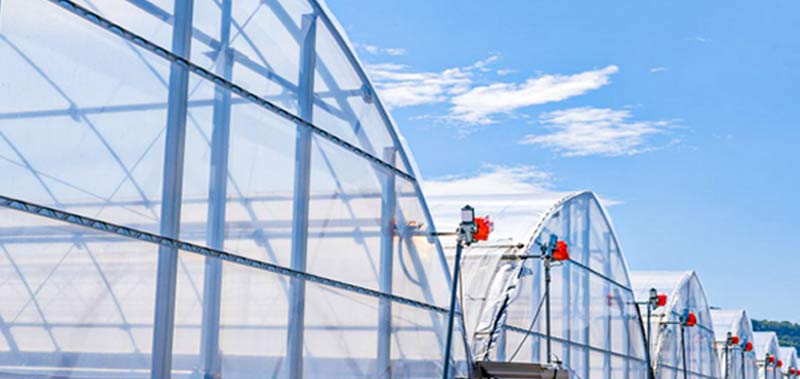
A single unit greenhouse means only one greenhouse is built. A linked greenhouse means multiple greenhouses are linked without pared. The advantage of linked greenhouses is smaller radiant heat area, lower wind pressure, and larger internal area. Also, facility and heating costs can be saved and cultivation management can be efficiently done.
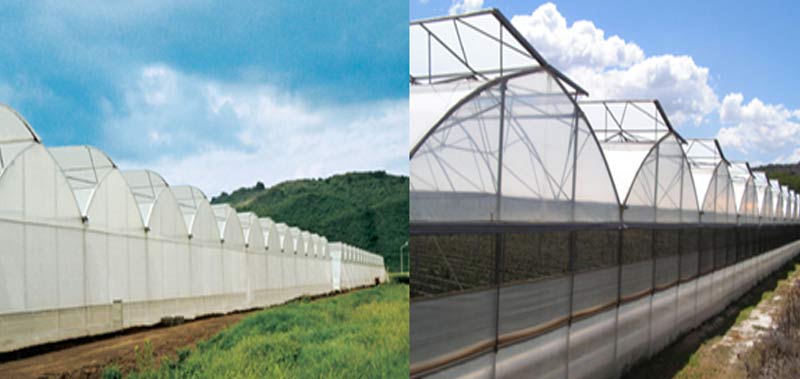
This type of greenhouse is a general form of pipe plastic vinyl greenhouses which is the most economical greenhouse as it can be applied in various forms and sizes to production greenhouses from a single or linked greenhouse to a small or medium or large greenhouse. Like the double roof greenhouse, this type of greenhouse is the most effective when installed in the south and north direction (the ridge of the roof lays long south and north). Recently, since durable and strong greenhouse film with high light permeability and heat reservance has been developed to be used as a covering material, the problem occurring due to frequent replacement of the covering material has been almost solved. Also, since auxiliary equipment and technology has been developed, various forms of environment control facilities such as ceiling/side windows, ventilation systems, and curtain systems have been made available.
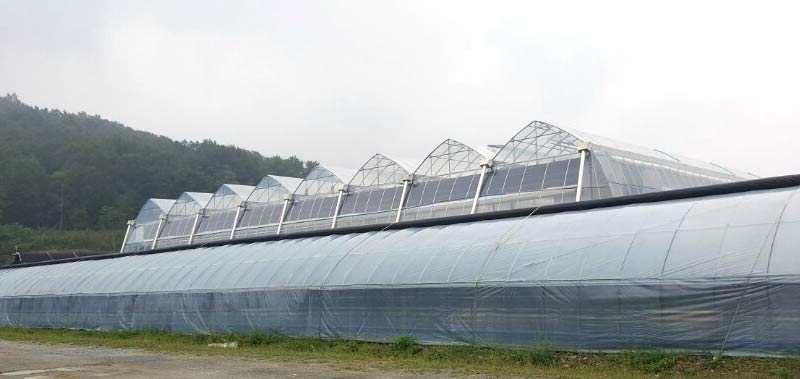
This type of greenhouse has been developed in Netherlands and imported to Korea. Whereas the double roof greenhouse has a wide span, the venlo-type greenhouse has multiple roofs (a series of small roofs is connected). This type of greenhouse can be installed either in the east and west direction or the south and north direction. It is mostly adopted for large production greenhouses since it has many advantages such as good light permeability and ceiling ventilation and it allows easy installations of various environment control systems and cultivation facilities. While it has an advantage in terms of construction cost, maintenance and management compared to wide span greenhouses, there is a concern that its roof structure is vulnerable to typhoons and earthquakes.
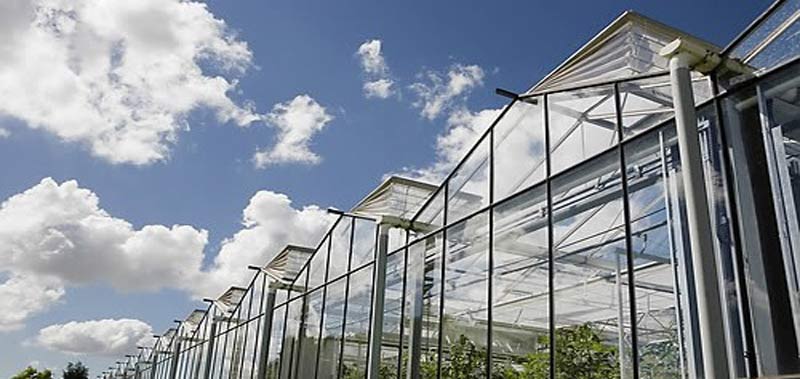
This type of greenhouse is highly adaptable to high temperature in summer and low temperature in winter. It can be installed even in a small area and can be installed easily since it is designed to be suitable for the arable land in Korea. Also, one of its advantages is convenient installation since its design is based on Korean materials. Compared to foreign glass greenhouses, its maintenance is easy and it is cost-saving.
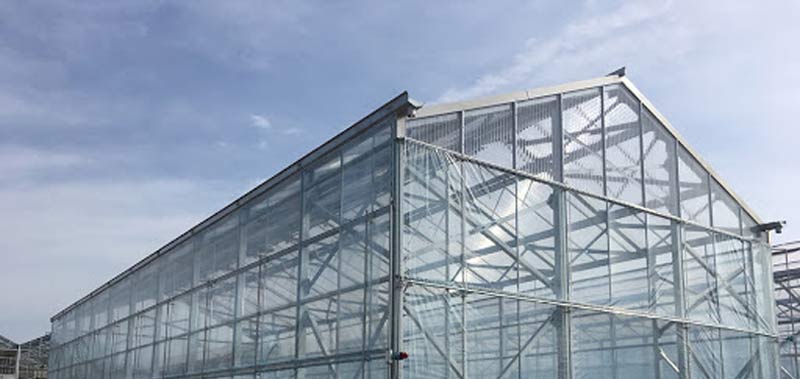
This type of greenhouse is the most general form of steel frame greenhouse (glass greenhouse and hard plate greenhouse). Some of its advantages are even light penetration, good ventilation through the ceiling/side windows, and reasonable and easy installations of environment control systems and cultivation facilities. Installation and facility costs are relatively lower and maintenance and management is easy and economical. It has a wide range of application: single unit greenhouses are usually used for small-scale household greenhouses and linked greenhouses are used for large-scale production greenhouses. It is better to install it in the south and north direction (the ridge of the roof lays long south and north) so that the roof can get light from the east in the morning and from the west in the afternoon. The slope angle is 25°-31° (27° in general).
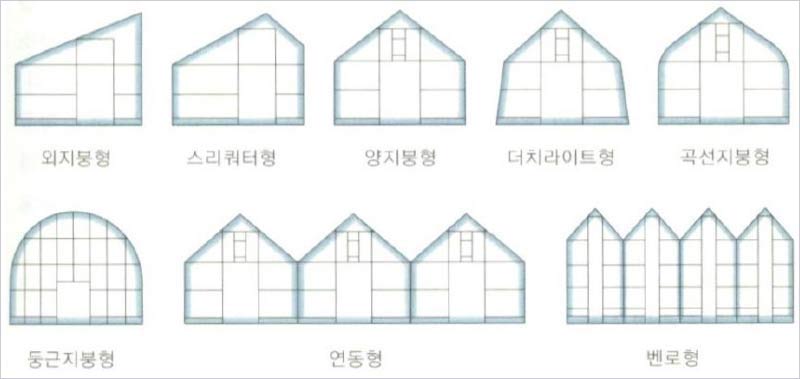
This type of greenhouse is usually built in single unit and small size. It is the most typical form of traditional frame greenhouses. The roof should face south by installing the greenhouse in the east and west direction using wall, embankment, and retaining wall. In winter, incident light through the roof is high, temperature rise is easy because of reflected heat from the north wall, and insulation of the north wall allows thermokeeping. As the light only comes in from the south, plants tend to tilt towards the south. Also, ventilation is not easy and the greenhouse tends to become humid. This greenhouse has a great value when used as a home farm, hobby farm, and growing room that requires high temperature. It is suitable for plants that require light from the morning to the night.
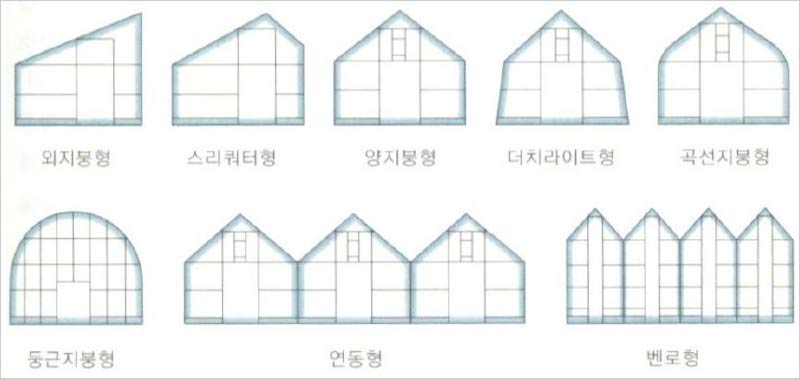
This type of greenhouse is a combination between the function of the half roof greenhouse and the advantage of the double roof greenhouse. It is mainly used as home farms and school farms. It is usually built in small and medium single unit which is suitable for crops that require a lot of light such as melon. It is installed in the east and west direction and the wide side of the roof should face south. Temperature rise in winter is easy because of high incident light and excessive humidity happens less because of better ventilation compared to the half roof greenhouse. Temperature control can be done economically if ventilation window, insulation material, and reflection film are adequately used on the north wall.
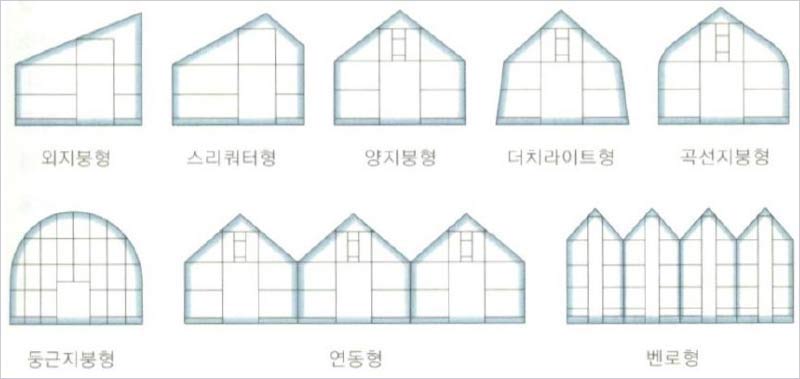
The above-mentioned five types of greenhouses are the most common forms of greenhouses used for management and production. Double-gradient, dome, hexagon, octagon or streamlined greenhouses (or variations/combinations) are often adopted for greenhouses for the purpose of viewers, exhibitions, samples, and botanical gardens. As the architecture techniques are becoming more developed and visuality of the exterior of buildings is more appreciated, the types of greenhouses are becoming more diverse. Especially as architecture of botanical gardens tends to depict a certain region, country or image, forms of greenhouses require diverse artistry. However, the common characteristic of those greenhouses is that while the exterior is fancy, the construction cost is high and installation of reasonable auxiliary facilities is difficult. As a result, they have less function and practicality as a greenhouse.
(2) Soil with good drainage, without drainage maintenance issues
(3) Natural windbreakers in the north or northwest side such as trees and mountains
(4) Low risk of avalanches, landslides, floods, and gusts of wind
(5) Long sunlight hours without high mountains in the east and south side.
(2) Typhoons, heavy snow, and heavy rain do not occur frequently.
(3) Suitable for the characteristics of the crops to be cultivated.
(1) Easy access to the transportation road.
(2) Close to the distribution market for material purchases and product shipping.
(3) close to the terminal of the vehicle (bus, lorry, airplane) to be used
* In general, 20ℓ of water should be supplied per 1㎡ of crop cultivation area.
- Tap water is expensive and not adequate as it contains disinfection solution.
- Pond or river water is not adequate since it can cause diseases.
* While labor procurement is easy but labor cost is high near urban areas, labor cost is low but labor procurement is limited in suburbs.
- Through reduced number of employees and increased productivity by automating your greenhouse, it is important to maintain your competitiveness even bearing high wages.




